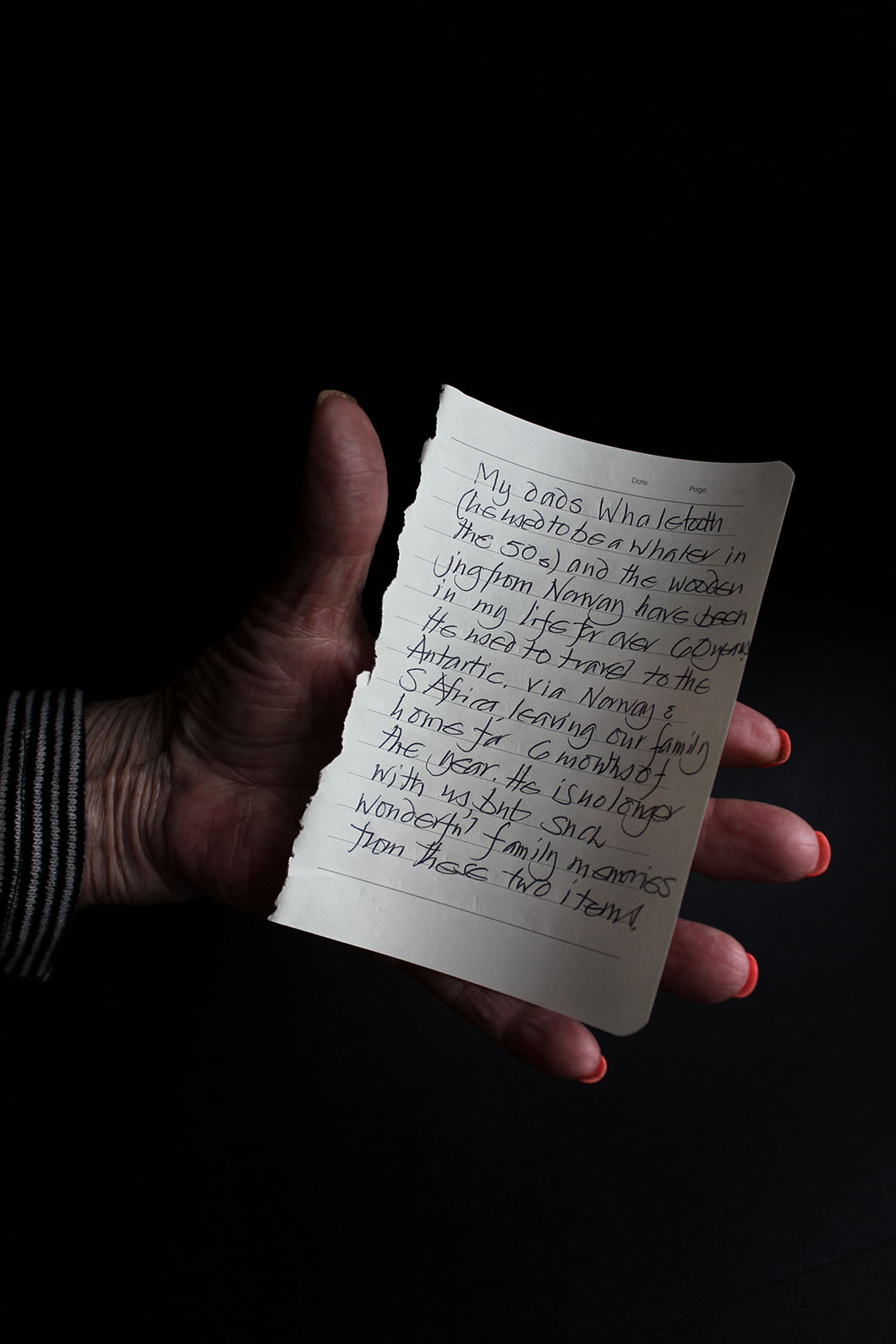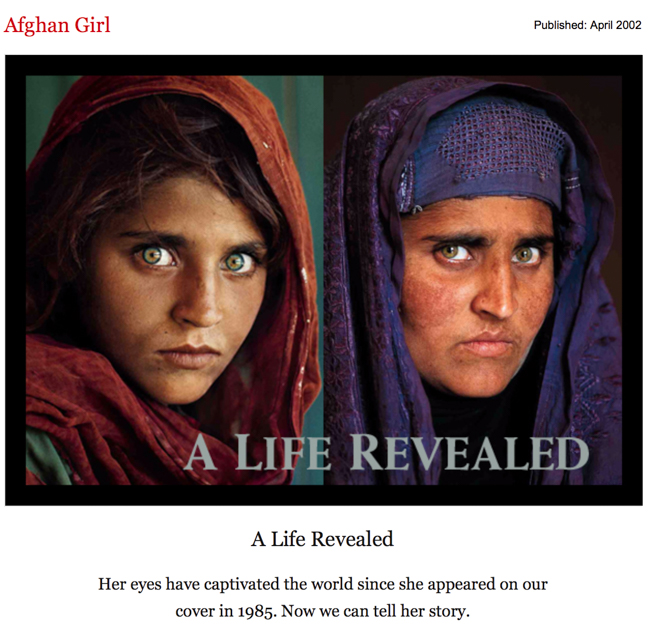![]()
All posts by Jude Luce
Filters
Philophobia / Autophobia
As I have been generating ideas for my personal study surrounding the idea of relationships within my own life and my own family, I have also generated a few ideas which I believe I could draw into the study at some point to accompany other main ideas.
Although not familiar with the phobia as no one I know has this particular phobia, I believe it to be a very interesting concept which may work quite well as an underpinning theme throughout my project; I have started to research into the phobias of love and lonesomeness and I feel may be able to express these a ceratin way through my own interpretation of them – as this is only what I can do as I don’t know anyone with the fears but believe their relation to my main theme of ‘relationships’ could go hand-in-hand quite well as the two phobias are often scientifically linked with one another also. Although, I don’t have to directly or explicitly make it obvious or known that I am addressing the phobia in my own interpretation of it, it can be a concept that the audience eventuality realise as they progress through the book – or a concept that may be evident to certain people depending on the way they read visual prompts or it may only be noticeable to myself, however, would like to, in some way, represent what I believe a fear of love/loneliness may look like.
However, if I was going to show these phobias in some way in my project, I would have to be careful not offend anyone who may have it but would address it very carefully and very subtly to contrast the idea of cohesion and unity between the people you love – I first came up with the idea after realising the divorce of my parents would make an interesting starting point for a story about love and relationship. Love is such a strong concept that can unify people in ways which we like to think cant be broken but eventually, may become broken – in the process of breaking the people involved in the relationship whether it be romantically or emotionally with a relative. My efforts to re-build a relationship which feels like it has been somewhat lost with my dad also links to this idea.
(Words from fearof.net) The fear of love (or falling in love) phobia is known as Philophobia. The word originates from Greek “filos” which means ‘loving or beloved’. Individuals who suffer from this phobia fear romantic love or forming emotional attachments of any sort. Often this phobia is known to have cultural or religious roots, where the person may have been committed to an arranged marriage and hence fears falling in love.
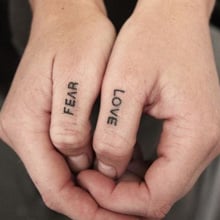
This phobia is more common in women than in men. The condition can greatly affect one’s life to an extent that it becomes difficult to commit or form healthy relationships. Such people tend to live their lives in solitude.
Philophobia is an unwarranted and an irrational fear of falling in love. Sometimes, the sufferer does fall in love but it causes an intense emotional turmoil in his/her mind. There are many theories why this could happen. Therefore, there is a possibility of falling in love when you are a sufferer of this fear but it may still remain in your mind – the idea that you fear to form any sort of emotional connection with a partner and this may hinder your relationship as a result.
Symptoms may include:
Some people are so afraid of love that they cannot open up to anyone. They do have committed relationships, but cannot maintain any of them.
Their well being often depends on the responses they receive from the person they love. This can keep them high strung and anxious all the time. They may be extremely possessive or, conversely, they may drive away their loved ones with their detachment.
One also experiences severe anxiety owing to the pressures of commitment: restlessness, shallow breathing, rapid heart rate, nausea, chest pains etc are a few physical symptoms that can be attributed to Philophobia.
Panic and anxiety attacks are also common. These can be terrible since the sufferer often feels dizzy, or feels like running away, crying, shaking or sweating profusely or even feels as if s/he is fainting.
Autophobia, also called monophobia, isolophobia, or eremophobia, is the specific phobia of isolation; a morbid fear of being egotistical, or a dread of being alone or isolated. Sufferers need not be physically alone, but just to believe that they are being ignored or unloved.

Autophobia can be associated with or accompanied by several other phobias such as agoraphobia. This means people might be afraid of going out in public, being caught in a crowd, being alone, or being stranded.
Persons suffering from autophobia are unable to do many simple tasks that most can do easily. The fear of being alone also leads to bad relationships as the individual prefers abuse to being left alone – the area in which I believe I can link relationships with these two fears.
Physical symptoms:
Feeling unsteady, experiencing lightheadedness or dizziness
Feeling of choking
Rapid heart rate, palpitations or pounding heart
Sweating
Chest pain and discomfort
Nausea or gastrointestinal distress
Trembling or shaking
Numbness or tingling sensations
As this seems to be a more severe phobia in which sufferers may become suicidal or may begin to self-abuse themselves, OI feel like this may not be as very suitable concept to follow through with and may focus mainly on ‘Philophobia’ as I feel like I could represent this in a more interesting and abstract manner by using my knowledge of love and its power and then transferring this to a direct oppostite.
A Discovery into my Mum & Dad’s Relationship
A couple of days ago, I went to collect a ‘box of memories’ from my dad’s flat to help me with my research into my mum and dads relationship as well as their divorce. He has previously told me about this shoebox he has filled with memories he has form his time with my mum. This includes postcards my mum sent from France when she 18 and my dad was 20. This was in the very early stages of their relationship when they had only been going for about a year, yet the postcards were filled with very cute and sincere messages telling my dad that she missed him and she can’t wait to see him. These are resources I intend to use for my project where I will photograph them against a blank background to achieve a studio effect where all you are focusing on is the object. These postcards were from my dads memory box as I said and he keeps it in his garage shoved underneath all his other junk and is often forgotten about until discovered when rummaging through the mess every year or so but I an glad I have got my hands on this to use the appropriate resources suitable for the story I want to tell. The postcards sent by my mum to dad will help to show the relationship the once had by using physical information – a love letter essentially. However, this, I intend to photograph very soon. Meanwhile, I have come across a new object which has sparked my interest to talk about.
Retrieving the special box of my dad sparked a thought that my mum might also have one of these, even though she has never talked or mentioned it or something similar before, as well, I had never seen something like it before, I believe this to be because my mum now has a very strong relationship with a new man which is a prominent figure in my life also who has been present in my life for now thirteen years, however, I asked my mum if she had something similar and she told me “yes”. This was great news and I was eager to get my hands on it to see what was inside and if there was anything that went hand-in-hand with that f what I found in in my dad’s collection of good memories from their time together. As well, everything I found was also new to me as I was very young when they split so remember nothing apart from myself speaking to dad about it. All the objects were new and it was great for me to see them and learn the stories behind them. However, when we went looking in the loft for the box my mum thought she had kept in this particular place, we could not find it and we emptied the whole oft and looked through each and every box, yet the collection of nostalgic objects was not there. My mum, as well as myself, was mortified as it many I could not retrieve nay physical information and evidence form mum’s behalf of the great times my mum and dad had together apart from hundreds of photos of us as a family from me as a baby to me at 4 years of age. SAs well, it meant tat mum had lost this box she treasured and cherished because it was filled with memories from her youth – in the most happiest times of her life – when she met her first love, she married him and had a child with him – this was all gone. However, mum did have some images and cards from their wedding hidden somewhere else and this was where I made my amazing discovery which is perfect to begin the project/book.
Mum began to take all of these images of her and dad at their wedding out this small bag and within that bag, she picked out two cards – one form her to dad the day before their wedding and one from my dad to mum also on the before the wedding, and, by chance, the happen to be the exact same cards they both have to each other! I was shocked but also overjoyed at this because I knew it would be a great way to begin my project, epically after reading inside at what they had both written.

I believe this gesture from both of them and coincidence of this one in a million chance of them both giving the same card to each other, just with a different heart-felt message to one another shows the true meaning of love – that the two of them were in sync with one another and it shows tat perhaps they both knew what they other half would like – they both saw the card in shop and picked it up knowing that it represented them two as a couple and this coincidence shows the concept of love displaying the essence of unity.
I was desperate to photograph the two cards together and make some sort of image out of them! I wanted to create a diptych or one image of the two of them side by side and, although not yet finalised, I’ve got an image I quickly took of them together but the lighting is poor and the image above will not be my final due to the ‘slapdash’ finish of it. I also managed to get an image of the message inside each card. As well, for my final edit of this, I wish to have images of developed exposures from their wedding day alongside the one image of the cards to show the ‘starting chapter’ as such.
Inside the cards, both my mum and dad wrote a very loving and quite emotional message that came from the heart. In the card, they expressed their love for one another and their excitement to begin a new chapter in their life together – this idea of a ‘chapter’ is expressed not only from their words about their life, but it will make-up a ‘chapter’ in the book also.
My dad has never been one for being emotional with his words and is not the best at articulating himself, which I have grown to realise as I have grown up with him and his card was not as in-depth as my mums, which made me chuckle a little because this has not changed. However, although his straight-to-the-pint words are limited in comparison to my mum’s I had an idea to transcribe one statement/comment/sentence form each of their cards and insert this into the book along with the images. My inspiration for this idea came from Yoshikatsu Fujii’s book of his own parents divorce where he includes transcribed statements from his mum and dad to tell a story more visually.
Below is my mum’s card to my dad: “TO MY DARLING ALEX,
“TO MY DARLING ALEX,
REMEMBER IT’S JUST YOU + ME – THAT’S ALL WE NEED TO KNOW. WE HAVE BEEN TOGETHER FOR 8 YEARS AND TOMORROW WE ARE STARTING A WHOLE NEW CHAPTER IN OUR LIVES – THERE HAS NEVER BEEN A DOUBT IN MY MIND THAT THIS IS WHAT I WANT – YOU + ME TOGETHER ALWAYS, I KNEW THAT SINCE I WAS 16.
YOUR MY NUMBER ONE IN THE WORLD MY LITTLE ONE.
SEE YOU TOMORROW, DON’T BE LATE!
ALL MY LOVE + KISSES
KATHERINE
XXX”
The statement I believe I will use due to its significance is the point at which my mum says “you + me together always, I knew that since I was 16.” I think I would choose this statement because, for me, it is actually very relatable as I actually fell in love when I was 16 – my girlfriend now is my first love and this was the same for my mum dad – they were both each others first love so there is an uncanny similarity here.
Below is my dad’s card to my mum:
 “TO MY DARLING KATHERINE
“TO MY DARLING KATHERINE
I LOVE YOU
HERE’S TO FRIDAY
THE BIG DAY
GOOD LUCK
HERE’S TO THE REST OF OUR LIVES TOGETHER
ALL MY LOVE, ALEX
XXXXXX”
From my dad’s card, I think I will choose to transcribe the statement, “here’s to the rest of our lives” because this was their plan and any other lover’s plan when they are about to marry each other and especially commit their lives to one another but it is a shame that at some point, the love does break down – not in all relationships, but many relationships end in a love which distances and becomes very difficult to express so this statement is very significant. However, I may not choose to transcribe any of dad’s statements from his card as the one from my mum speaks a lot.
The print on the card reads:
IN A WORLD OF RUSH AND CRUSH AND CROWDS,
IT ALL COMES DOWN TO THIS — A TENDER WORD, A GENTLE TOUCH, A SMILE, A LOOK, A KISS…
IT ALL COMES DOWN TO FAITH AND TRUST,
IT ALL COMES DOWN TO WHETHER WE’RE GOING IT ALONE OR KNOW WE’RE IN THIS THING TOGETHER,
IN A WORLD OF HYPE AND HURRY,
IN A WORLD OF PUSH AND SHOVE,
IT ALL COMES DOWN TO YOU AND ME,
IT ALL COMES DOWN TO LOVE
The print on the card alone is very sentimental and is very heart-felt and it sums up love – that no matter what, you will always have on another – act as thought it is just you two in the world and nothing can stop you because love conquers all. I believe in this concept very much and hoe to show it clearly in my project.
Further Planning (Format of Project and Visual Diagram)
Over the past couple weeks, I have been producing a couple of handwritten documents/diagrams addressing the content I wish my project to outline and how I will go about this. Discussing and laying out directly the plan and format for my investigation helps not only myself, but the audience to understand my primary thought processes and the hopeful outcome of the project.
This diagram shows how I wish to set out my project and what I wish to show in the order stated; The project will be based and will revolve around myself as the centre point and then this will branch out into the starting point which consists of my mum and dad; relationship when they were together until I was 4 years old, I will then briefly explore this divorce but then move onto experimenting the experiences I have had with both of my parents and how this is different. This will begin form when I was young and then gradually progress to the stage I am at now with my life and how the experiences I’ve had as a child have shaped me now – which is what the latter of the book will consist of – me as a young adult and the relationships of built independently with other people, including my girlfriend, my sister and my friends.
I have previously mentioned all of the below but I decided to put it into a diagram to make it clear for myself but also the audience. I intend to include other aspects, as well as portraiture and environmental imagery, such as self-portraiture of me with my girlfriend, and I will look at the project by Alec Soth called ‘Looking For Love’, as well as transcribed conversations or statements from the subjects and participants of my book. Over the course of the project, I intend to make a mini ‘behind-the-scenes’ film which shows the processes I go through to make the project which will consist of myself talking to the subjects and the discussing with me their memories they may have chosen as special, in particular, my mum and dad. However, this is just an idea and will finalise this when necessary.
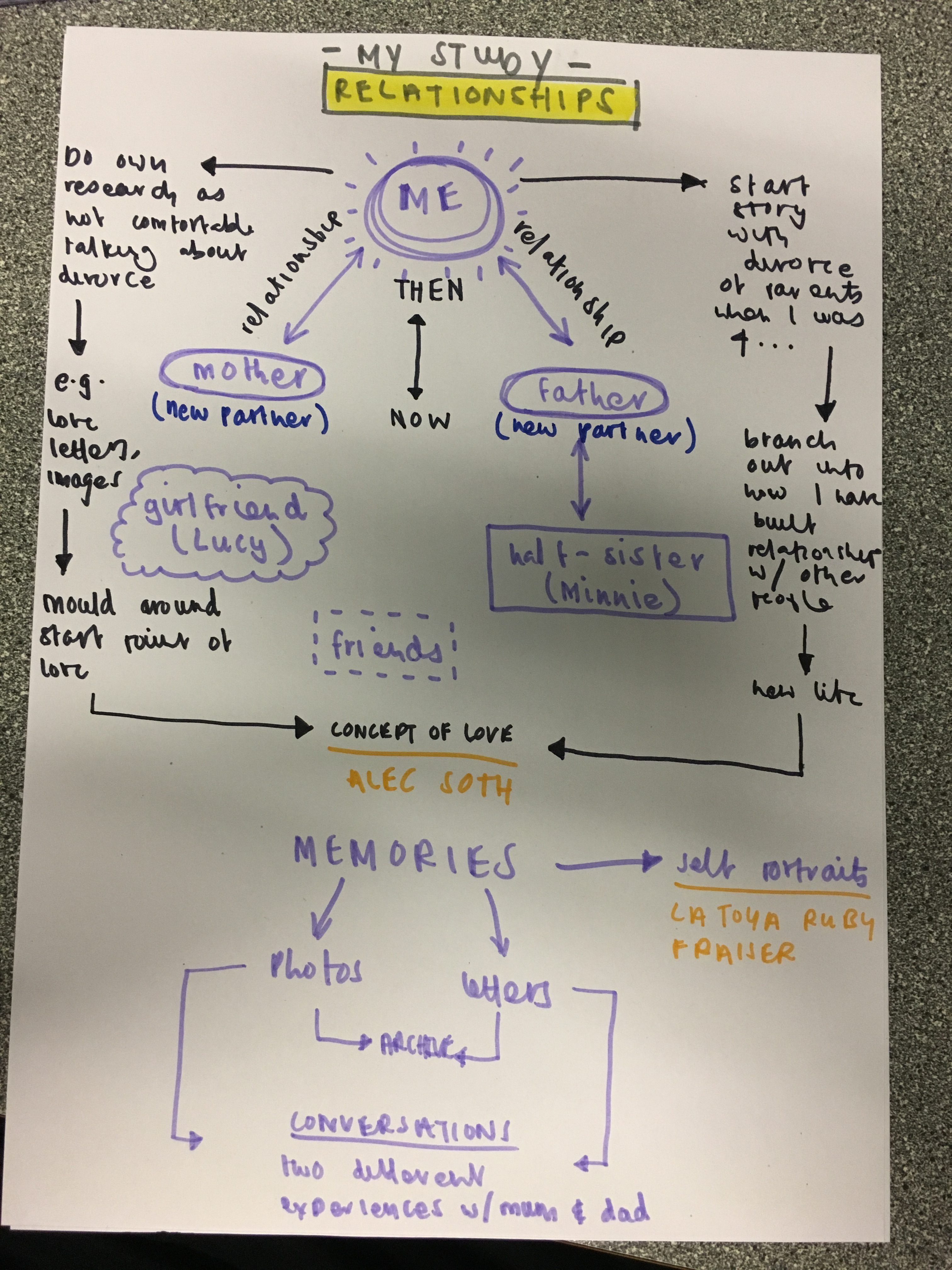
The document below is a handwritten, essential hypothesis by me which outline the format of my project.
Although showing a cohesive narrative filled with the underpinning topic of relationships, I wish to in some way, segment and divide my boo into different parts but I may not do this for the final outcome as I may come to realise that it doesn’t look good and instead, the different images accumulated from each relationship in my life may look better merged together but, right now, I feel like I will be able to tell a better story if I was to physically split each part; my mum and dads romance, their divorce, the relationships with both parents and how I have two different experiences, one being a close relationship, the other being unwelcomingly distant. This will then branch out to my relationship with my sister, Minnie and I will bring in the concept of friendship in this part by showing the contrast between my mature relationships with my mates and Minnie’s very delicate and potential false relationships with her friends as they are still unaware of true friends which are meant to be built up over the years in which you grow and this could be an interesting concept to show – the fun-filled lives of kids the same age as Minnie which are worlds apart from min but in many ways, similar. I will then conclude the project with my relationship with my girlfriend, Lucy and this will show my interpretation of love in comparison to that of my mum and dads and may conclude the project with the same question/concept as that at the beginning – ‘what is love?’ or ‘the tenderness of relationships.
In this part, I will include self-portraits of myself and take inspiration from Alec Soth as well as LaToya Ruby Frazier and hope to show the similarities as well as differences between my current relationship to that of my mum and dads, using archival imagery as sources of inspiration.

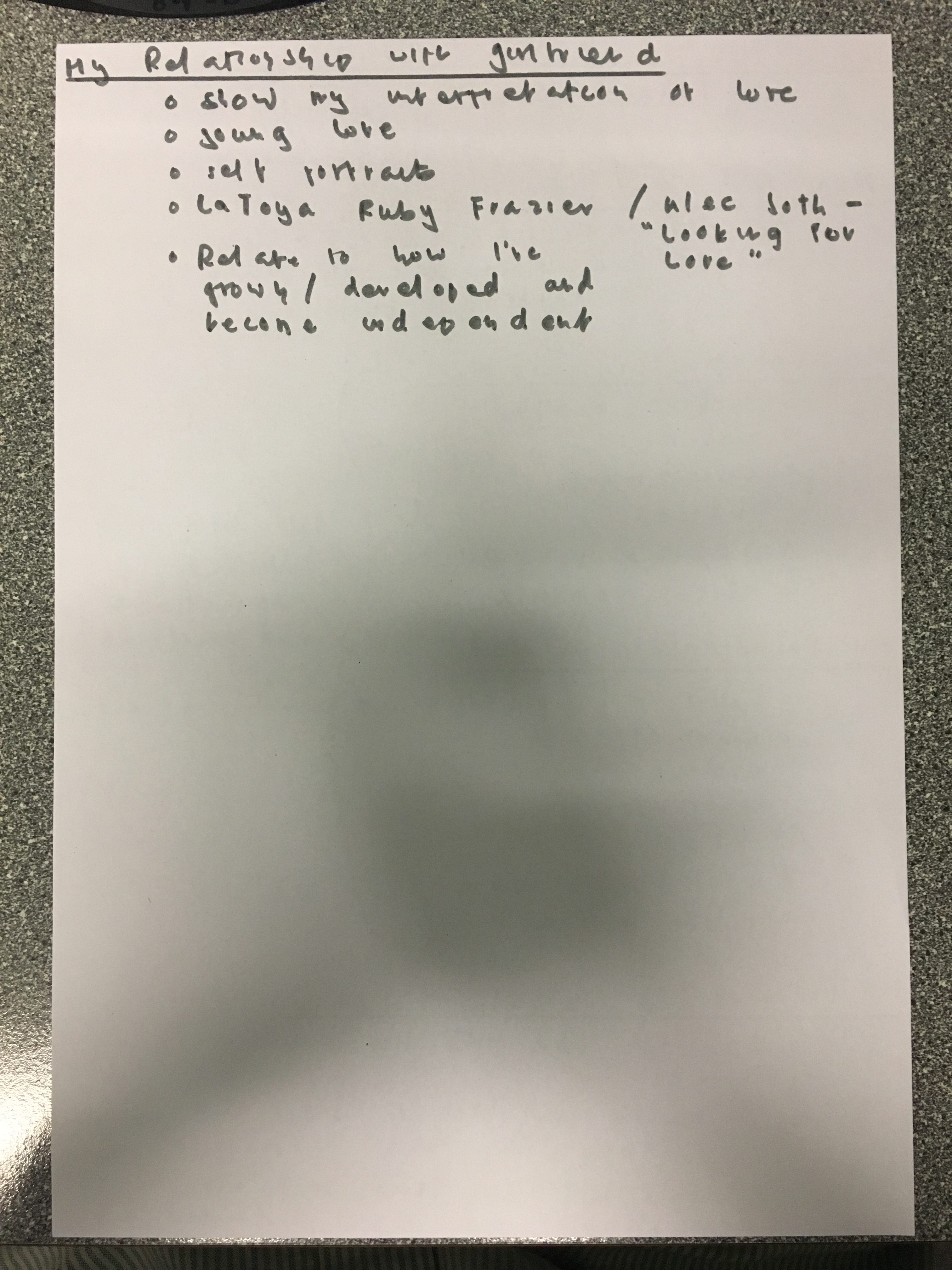

Representation in Photography
To study the idea of representation in photography and how certain aspects within imagery are presented to an audience, I will be looking at the work of world-renowned photographer, Steve McCurry, who is a very iconic documentary photographer succeeding in his captivating images produced for National Geographic.
Steve McCurry (born April 23, 1950) is an American photographer. The photographer, is best summed as world-renowned success in the medium of documentary photography, especially in culturally deprived areas such as Pakistan and Afghanistan. He has worked in photojournalism and editorial. He is best known for his 1984 photograph “Afghan Girl”, which originally appeared in National Geographic magazine. McCurry is a member of Magnum Photos.

The image above is the world famous portrait of a young girl in Afghanistan and is titled ‘Afghan Girl’ for obvious reasons. Taken by Steve McCurry when traveling the world producing content of National Geographic, there is something very touching about the image above – something tat speak to the audience and I believe it to be because we know that this girl is likely to be very less well-of than we are if we use our schematic knowledge surrounding the topic of deprived areas such as Afghanistan this allows us to understand the likely difficult and traumatic life this girl may live – being surrounded by a war zone for most of her life and having to live with this as a environment that she has to grow up in. I, for one can feel a sense of sympathy and sorrow for this girl – she is young and lives a completely different life to us without the knowledge to understand the meaning behind possible explosions which occur on a day-to-day basis. We do not know of the help she may receiving if she does live a very poverty-run life and this portrait helps us to understand this. The use of her looking into the camera, directly at the audience is a very powerful tool and the facial expression gives off a feeling of trauma and vulnerability – her open and alert eyes let us know of her emotions, in that she is scared and overall it is a very well constructed image and is rightfully a world-famous image as it opens up a door to another life most of the world do not experience in their lives, and this is something we must be grateful for and McCurry has attempted to portray a unknown environment to us through his imagery. Us as humans love people watching and being a little nosey into others lives, which is why most of us enjoy and find pleasure out of watching vlogs, documentaries or capturing out own street photography or looking at other dociumeyatry photography but the scale on which McCurry does this at is on a much higher and more serious level. It triggers our satisfaction for being a fly-on-the-wall in others lies but this is for a much meaningful purpose. However, one thing I’d lie to pick up on is the fact that I, personally do not actually like the image – I don’t enjoy looking at it, not due to its context but due to the actual way it looks – it is not something that attracts me t the image and is more so the meaning behind the subject which draws me in. Hover, McCurry produced this image with the purpose to fit the style and method of National Geographic as a whole and this has been done to a tee as it shows us the harsh reality, although not direct, of what life in other parts of the world us like. The image appeared on the cover of National Geographic in June 1985. There is a reason McCurry has been hand-picked by national Geographic and is member of Magnum Photos and this is because he does his job so well and many people gave fallen in love with not only him and his work bit the actual physicality of what he captures in every image – the colours, the subjects, the cultures, the lifestyles – our ability to connect with every subject in each portrait is what we love because not every photographer has the ability to create an image so well – something I will be talking about later.
American Photo magazine says the image has an “unusual combination of grittiness and glamour.” which I believe to be very true.
Expanding on the idea of representation, like I mentioned before, this is a very touching and harrowing representation of this young girl and we are able to get an insight into her life. The girl is represented as quite lonely and isolated and form her facial expression, quite scared and lonesome and we don’t know whether this as true or staged as us as the audience can only act as people who interpret the content to what we believe but the notion of true and false is hard to decipher when looking at the work of McCurry, yet t is something we believe to see as true and not staged as this would be providing us with false visuals bit in another sense, we also hope for it to be false because we do not wish to face the harsh reality that people across the world, in abundance, do actually live like this. On the other, we appreciate the imagery that McCurry produces us because we get so experience other cultures for ourselves fro what see in the frame.
It has been likened to Leonardo da Vinci’s painting of the Mona Lisa and has been called “the First World’s Third World Mona Lisa“.
Now mentioned, looking at the similarities of the Mona Lisa and McCurry’s Afghan Girl, there are many resemblances of both in each other. It is perhaps that McCurry took inspiration of the elegance and pureness of the painting of Mona Lisa an then transferred this into his portrait of the young girl in Afghanistan. Both look directly into the camera with a blank facial expression. They both have long, dark, maroon coloured hair and wear a draped scarf or vale over their head. In both imagery, there is a sense of delicateness and urge to show the femininity if our world – to show the beauty of females whether that be through a painting or photograph and though we may be faced with something difficult to address, looking at McCurry’s work, the beauty is beneath. Maybe this is something else McCurry attempted to present and show us – the inner beauty of this young girl that is underpinned by the courageousness of her efforts to stay brave in the situation she found herself in at the time. It is aa though the women in both works are attempting to tell the audience something through the very intense gaze they possess. McCurry provides us with a modernised version of the Mona Lisa for us to embrace.
In early 2002, the subject of the photo was identified as Sharbat Gula, an Afghan woman who was living in the Nasir Bagh refugee camp in Pakistan during the time of the Soviet occupation of Afghanistan when she was photographed. This effort to re-photograph the same girl several years after she has once matured and become a grown adult tells a story and a very powerful narrative which the world can acknowledge as the image at the time when she was a girl touched the whole world as a community and again when her face is shown again over 15 years later. It was revealed that she had never seen the Afghan Girl image before it was shown to her in January 2002.
McCurry made several unsuccessful attempts during the 1990s to locate her. In January 2002, a National Geographic team travelled to Afghanistan to locate the subject. McCurry, upon learning that the Nasir Bagh refugee camp was soon to close, inquired of its remaining residents, one of whom knew Gula’s brother and was able to send word to her hometown. However, a number of women came forward and identified themselves erroneously as the famous Afghan Girl.
Although being a very successful and iconic image worldwide, ‘Afghan Girl’ and many of Steve McCurry’s other images taken in India during his time there for National Geographic can be seen to be quite romanticised and purposefully made to look more glamorous than reality suggests native to India, writer for New York Times Magazine, Teju Cole, explores this in more detail and criticises McCurry’s work on this very factor that many of his images seem ‘too perfect’ and he compares other representations of India that come from natives, such as Raghubhir Singh to McCurry’s and finds an evident juxtaposition between an insider’s view and an outsider’s view. Making for an interesting story about presenting a fake reality to please a modern by audience looking for extravagantness and in reverse, we see a more real and raw look of a country told by the locals, not tom please audiences but to provide reality.

Teju Cole in his article addressing this topic he feels very passionately about goes as far as to say that McCurry’s images are “astonishingly bring” which may seem quite harsh and disrespectful as most would see McCurry as a hugely influential and dedicated photographer but I can see where Cole is coming from with this very brave statement as there isn’t much in his images that sparks interest from me in terms of look and visuals. Like I said, you would think that McCurry’s work should be admired and loved by everyone because of its popularity in National Geographic and his image of the Afghan Girl which will live in memory but his work is not for everyone, including Teju Cole and myself but Cole himself mentions the immense popularity of McCurry’s work which “adorns calendars and books, and commands vertiginous prices at auction.” – in other words ‘sells for ridiculously expensive prices’ and Teju Cole cannot see the demand for such images which are “boring” because he sees the images produced by McCurry as unrealistic of Indian culture – evident in the image above where photographed is a very glamourous scene where in frame is a train going by with natives on the front in their colourful and beautiful headdresses looking very polished and slick and in the background is the Indian landmark. the Taj Mahal and it almost seems “too perfect” much like the title of the article suggest. Cole says “The men are real, of course, but they have also been chosen for how well they work as types.” This is suggesting a fake presence around McCurry’s work that they have been specifically chosen as they look well together and it makes for a very glamorous image which is not a true representation.
Indian photographer, Raghubir Singh worked from the late ’60s until his untimely death in 1999, traveling all over India to create a series of powerful books about his homeland. His work shares formal content with McCurry’s: the subcontinental terrain, the eye-popping colour, the human presence. Within these shared parameters, however, Singh gives us photographs charged with life: not only beautiful experiences or painful scenes but also those in-between moments of drift that make up most of our days.” Here Cole talks about the difference between Singh and McCurry’s work as well as similarities but focuses on the negatively charged feelings which exude from McCurry’s work in particular and suggests that this is incorrect and not how he wishes for his homeland to be shown and therefore, with pride, backs the work of Singh to show what India is – in that it is a land full with life but is better shown through the snap-shots of everyday life – what is in between the hustle and bustle of a usual busy location.


An example of Singh’s work is show above and is quite the opposite of McCurry’s work although taken of the same content – just much more relaxed in its composition. Singh focuses on creating a ‘snap-shot’ of one second in time – no-one is looking directly into the camera, not is there exaggerated shadows and colours enhancing in after-affects and instead we are given a much more raw representation of India’s busyness told from the perspective of an insider. Although an outsider’s view, McCurry’s amateur representation of India is still loved because we are given something simple to feast our eyes on; not a narrative which needs to be unpicked yet still enjoyed in its visuals – much like what Singh’s work offers.
Looking at another view, above is the music video for Coldplay and Beyoncé collaboration song ‘Hymn For The Weekend’. Although very poplaur, it has spakred much controversy over its intentions.
Written by Billbaord, ‘Coldplay’s new “Hymn for the Weekend” video featuring Beyoncé that was released on Friday 29 January is catching some heat over its Indian inspiration, with some online calling the Mumbai-shot clip a work of appropriation while others defend it as an appreciation of the foreign culture.
People were seen to express their fury at both Beyoncé and Coldplay and people took to Twitter to outburst their range over what should be seen as an offense to the local culture instead is being ignored because it has been addressed by two popstars who are worth millions. Some said ‘Are we gonna discuss how Beyoncé dressing up as an Indian woman for the Coldplay video is cultural appropriation, or no?’ and another said ‘Just because it’s Beyoncé, doesn’t mean she’s right. She is being offensive and appropriating our culture.’ However, some actually like the fact that Beyoncé was seen in the video to dress up as an Indian woman as it empowers them and someone said ‘I adore Beyoncé for embracing my culture. In a country where I’m a “terrorist” I have never felt more accepted’. And it is argued that Beyoncé is likely not offensively appropriating due her black origins and this would not be in her remit.
However, In my own view, I had never looked that far into it until now and just saw it as a band who wants to embrace the culture of India and not intentionally offend anyone by different people have their own views on representation and it is often misinterpreted.
Primary Inspirations/Thoughts for My Project
Primary Preferred Artists
- Phillip Toledano – When I Was Six
- Yoshikatsu Fujii – Red String
- Colin Pantall – Sofa Portraits
- Arno Brignon – Joespehine
- Brooklyn Beckham – What I See
- Paul Gaffney – We Make The Path By Walking
- Sophie Calle
- Hekki Kaski – Tranquility
- Rita Puig-Serra Costa – Where Mimosa Bloom
Arno Brignon - Josephine




“July 1st, 2009, birth of Joséphine. Doubt and fear mingle with joy and pride. Having a child can be the simplest thing in the world. For us, it was long, unlikely, unique. In maternity, they call it a “precious pregnancy”. It is also an imbalance announced to our life as a couple, a love story for two to rebuild to three.”
This series by French artist, Arno Brignon looks at the fragility of birth and being a mother and how carefully you need to transform your life in order to mold this new introduction into your being as human – what you lived for before pregnancy all of a sudden changes and this explored through a very diverse range of portraits and landscapes delicately addressing the topic of birth and the fear of your family crumbling.
I believe the concept and content of this very moving series is relatable to my thoughts for my project where I will look at the fragility of family life through divorce and the events that come after this. I love the colours in this series and the textures that are achieved from using film as opposed to digital. The graininess is very nostalgic and suitable.
Paul Gaffney - We Make The Path By Walking


The British Journal Of Photography writes “Nothing much is happening in the images and there are no people in sight, yet everything is happening; knotted, overgrown roots catch the light and weave in and out to form complex networks; a craggy cliff-side reveals an intricate patterned texture; windswept vegetation exposes an inviting pathway. Gaffney’s sensitive handling of the landscape allows his subjects to breathe, and through their very subtlety the images sing.”
It is Gaffney’s first self-publishes book and contains photographs taken in rural Spain, Portugal and France. The idea he explains was to explore long-distance walking as “a form of meditation and personal transformation.”
Although this project does not include any people whatsoever and focuses solely on landscapes and the environment around us, the images included in the series I hope will influence the style of imagery I capture for the images I produce of the environmental/location aspect of my project. What I like about the images are the very surrealist sense about them, as in some examples, it looks very overgrown with greenery and this often juxtaposes against an urban background. My images will not be as dramatic as this but will adapt the effect of looking hazy.

Heikki Kaski - Tranquility
https://vimeo.com/125994256
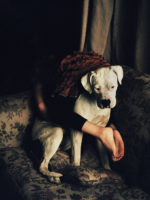
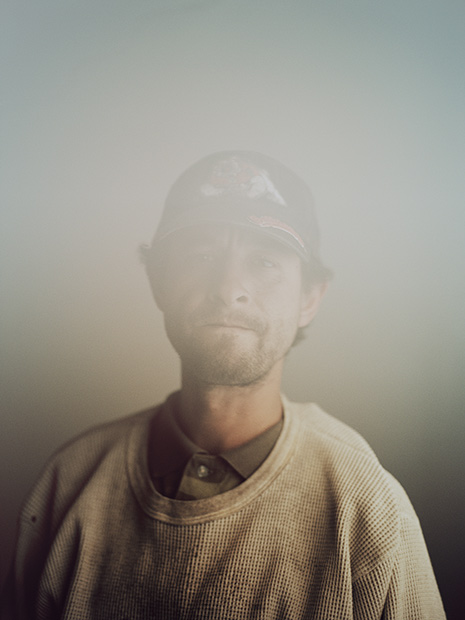

Heikki Kaski (born in Kantvik, Finland, 1987) lives and works in Finland and throughout Scandinavia.
In the series, ‘Tranquillity’, there is a tension, a beat-down quality, that is beautifully conveyed in the barely balanced framing and dusty, drained palette of the photographs.
Heikki Kaski’s pictures of the town in California with a now population of 799 people and its inhabitants. It is a fractured series of reflections on a landscape that seems to have outlived its own history. He tells the story of the very quiet and isolated town and the people within through smart and sleek images of objects, portraits and landscapes. The images are very aesthetically pleasing and it something I am hoping to show in my project consisting of similar style images. Although a completely different context, the look and meaning behind the project will be similar to that of Kaski; I will look to the show the people that have a particular relation to environments and how this affects the lifestyle of these people. Although focusing on divorce, I am focusing on memories and the thoughts of my mum and dad that take them back to “good times” as such which will be displayed through very simple images of environments and portraits.
What I like about the project is the physical book which showcases the work so very elegantly. The set-out of the images on the pages, the colours involved and the overall look is very representative of the thoughts I have in mind to be minimalist in my presentation.
Rita Puig-Serra Costa - Where Mimosa Bloom

 Rita Puig-Serra Costa’s work is very captivating and speaks lots about family and the relatives within shown through the thoughtful use of showing a family tree through the archival portraits of her family members.
Rita Puig-Serra Costa’s work is very captivating and speaks lots about family and the relatives within shown through the thoughtful use of showing a family tree through the archival portraits of her family members.
Dealing with the grief that the photographer suffered following the death of her mother, ‘Where Mimosa Bloom’ by Rita Puig Serra Costa takes the form of an extended farewell letter; with photography skilfully used to present a visual dedication through speech and imagery to her deceased mother. This grief memoir about the loss of her mother is part meditative photo essay, part family biography and part personal message to her mother. These elements combine to form a fascinating and intriguing discourse on love, loss and sorrow. “Where Mimosa Bloom” is the result of over two years work spent collecting and curating materials and taking photographs of places, objects and people that played a significant role in her relationship to her mother, writes the site’s statement in which the book is available of purchase.
The concept is something similar to what I hope to follow through with in my own memoir to my mum and dad and myself and the lives we have since followed after the division of the family. I will be focusing on the relatives from then and from now who have played significant role in shaping my life to what it is now and who I am now because I feel using the technique of including myself and revolving the project around myself will make it easier for me to tell a better story.
I have already looked at the work of Serra-Costa and really enjoyed producing something so contemporary which revolves around the close collaboration with my subjects to produce the end result – I look forward to doing so again in my current project but on a much larger scale.
My Idea
I am going to focus my study on my mum and dad and the event that changed my own experiences as well their own and the events we would come to experience together, as a collective throughout my upbringing as a child into a teenager and into a young adult to who I am now – their divorce. When I was at the tender age of 4 – when I was aware of my surroundings and what went on in my life – who my most closest relatives were and who I could put my trust into to develop as human to who I am now. At 4, however, you don’t know the concept of love and what the event of you being born can do to a couple who were once unconditionally in love with each other. It causes stress, friction and unwanted distancing from one another – love has the potential to eventually break the people involved.
I have therefore chosen to explore this very fragile and mildly taboo subject of divorce further in my own personal investigation for the year to come. The final result of this very in-depth and rigorous investigation about the relationship which was once there between my mother and father and to what it is now will be a photobook consisting of the images I aim to produce for the remainder of my A2 year.
When handed the task to collate several ideas about what you wish to hone in on for your own personal study at the beginning of the week, it is an understatement to say that I struggled to find something I had the passion and motivation to do. I wanted to focus on the concept of family because I feel like more of a narrative can be told through this concept and I was very eager to start exploring own family. Hover, I did not know what this “special” thing was that I actually wanted to look into because I couldn’t think of anything that would generate some exciting thoughts in my mind. I had the idea to use my sister – to show the contrast between my childhood and hers through t use of my own personal archival imagery, or maybe the use of my girlfriend and her own family and the juxtaposition of her own and my now family and idea of “family”, however, this did not excite me enough and I finally came to the conclusion to investigate the divorce if my mum and ad when I was at the tender age of 4. This very influential event has affected my life since the very day I found out the spit of my parents and even though I d not fully understand this very complex subject and concept when told at the time, it has followed me throughout my life and it has moulded how I am, as well the rest of my family, including my now 4 year old sister herself and my relationship with her.
I will be focusing predominantly on the work of Japanese photographer, Yoshikatsu Fujii. In particular, I will be using her book, Red String as my inspiration for my project based around my parents and myself and my relationship with both of them.
Yoshikatsu Fujii was born and raised in Hiroshima City. He graduated from Tokyo Zokei University of Arts with BA in Art Film. He began photography work in Tokyo in 2006. His photographic works often deal with historical themes and memory lingering on in contemporary events.
What I love about Fujii’s work is the very diverse range of materials and resources used in the book. Not only is the actual book handmade very carefully with fabric and actual red-string used as decoration throughout, but he has used archival imagery from his personal archive about his mother and father, but also inserts of texts and transcribed discourse from his parents and contemporary imagery to balance out the theme of looking back at the past but also living in the moment and exploring more about his present day family.
The reasoning behind the title ‘Red String’ is because of a legend that use to exist in Japan. In Japan, legend has it that a man and woman who are predestined to meet have been tied at the little finger by an invisible red string since the time they were born.
Unfortunately, the red string tying my parents undone, broke, or perhaps was never even tied to begin with. But if the two had never met, I would never have been born into this world. If anything, you might say that there is an unbreakable red string of fate between parent and child.



Mind Map of Ideas for my Project


Truth In Photography
Can a photograph lie? A photograph can tell a 1000 words – but sometimes those words may be a misconception or they may be interpreted differently from on person to another – depending on your own general knowledge of current affairs etc. you may be less educated about a subject than someone else and therefore a lie may be different for each person.
Even something like the photograph above comparing a naturally coloured image to a manipulated black and white image can be classed as lie because it is not showing the image in its natural colour once converted to black and white and therefore because of this change in colour of highlights and shadows, the whole meaning and mood of the image is transformed – in the coloured image, the mood is much more cheerful due to the bright sky behind and the healthy and vibrant skin tones of the subject, however, once converted to black and white, the shadows become much darker and the highlights become much lighter – affecting the mood and ,making it more melancholy and serious and we immediately feel much more sad emptions when looking at the black and white alternative. This image is not telling the truth and it is a very simple example but something that it is evident as a lie in phtooagrohy everyday as on photo editing and sharing apps such as Instagram – editing an image is the norm and it is what is used to attract the attention of the viewer and improve the quality of an image by enhancing colours etc. but it is a lie!
A more serious example of this is in Dimitri Baltermats’ image of grieving family members seeing the deceased bodies of their loved ones after the Crimea War in 1942. Due to the inability and inaccessibility of digital cameras in these days, images were shot on negative and then developed in dark rooms with the use of chemicals etc. However, photographers till has the ability to choose to enhance or alter some of the colours in black and white images they were developing by changing the qualities of chemicals. This was the old way to manage the ‘levels’ we are now familiar with in photography when we are editing image on Photoshop and artist could change the shadows by lightening them or darkening them to change the mood – exactly what Baltermats did in his controversial image of the 1940’s (below).
As you can see, in the image, the sky looks quite dramatically dark and this is because of Baltermats efforts to alter the darkness of the shadows produced by the clouds in the sky. The original would have been much lighter but the artist chose to darken these colours in order to overall alter the mood and tone of the image. The image consist of families grieving and mourning over their loved ones lost in the war as they look lovingly yet full of grief and sadness over the dead bodes on the floor. The whole context and content is hard-hitting alone but the use of darkening the shadows in the sky has added to this but it is a way of lying in an image and it is the true representation of what was happening but it was used as a way to provoke sympathy from the audience.
There is no doubt, that generally in life, we all class a lie as something forbidden against and something it is classed as morally and ethically wrong due to its consequences that cone with it after a lie has been committed, if you like. We are taught not to lie as this is not right and may result in controversy and we always want to tell the truth but a lie can be used a s a manipulation tool to play with the minds of people, whether it be a little white lie or bigger – it has its often negative results and that’s why we intend to always speak truth – however, people can also lie through photography and imagery and cab be seen as less inflicting on society or people due to it being non-verbal – a pre-conception that it is a lie in itself because a lie in photography can be just as risky as that of information passed on by people. Therefore, the answer to whether a photograph can lie is ‘YES’, it can but the severity of the lie can depend on the hands the image may be in and how far of a lie it may be made into.
The image above (above) can even be called a lie inn photography. This is an image taken by famous celebrity and fashion portrait photographer, Rankin. The image is called ‘3 Lips’ and can be argued to be a lie and not true due the use of make-up and special effects to manipulate the physical look of the models face. Her face would originally be naturally free of make-up and instead is now caked in make-up and sequins to benefit the look of the image’s outcome – it is not a true representation of the subject as she is covered up by make-up and this is essentially a lie.
You can argue that a lie in photography is the use of Photoshop’s very handy and useful tools such as skin touch-ups and the ability to turn a slice of pizza into a ‘supermodel’ for magazine cover, and you can also argue that a lie in imagery is cropping part of an image of frame so that it is does not exist anymore, or a lie a may be manipulating an image manually, like in Jonny Briggs’ work where he uses other subjects such a chewing gum to cover the faces of two people in a portrait. However, a very iconic lie in photography is derived from the image of that of Robert Capa’s – the world-renowned war photographer whose image of a loyal soldier mid-fall from being shot by the opposing country as a result of appearing above the ditch on no man’s land (below).
The truth of the phot above was not revealed by Capa at the time it was taken and then published because he did not feel comfortable talking about it – which is understandable. In the image Capa captured above, it was amazing at the time and it has gone down in history as images that changed the notion of photography. The image shows a soldier being shot down and then falling on the ground as he releases the grip of is shot gun – and thi is what happened and what Capa captured so very conveniently ands at the perfect moment in time as he has just been impacted with the bullet and it is nit very pleasant ot see and we as the audience can feel a sense of anger towards the photographer who hasn’t done anything except see it as a perfect opportunity to take a photograph when someone is dying on a battlefield and although it is useful he documented this moment in time with his camera as it shows the camera as a tool which can act a witness for events like this, we have only recently learnt how the moment actually came about. Capa has recently spoken out about how the soldier got shot and he said that he asked the soldiers he was with for the last few days as he documented their life on the battlefields to get out of cover on this particular day and “act out war” and “play out” what war would look like and surprisingly, the soldiers did as he asked and as a result of this very light-hearted act of kindness and humour, one soldier received the inevitable punishment of putting himself out on No Man’s Land by getting shot by the opposition. So although the death of this soldier is real and true, the tragedy never has to happen and can be argued to be a lie. We struggle to see whether truth has been depicted.
Although there has been the introduction of digital photography and the ease of capturing a second in time with a digital camera and then uploading it to a computer through the advancements of technology all within a couple seconds of each other, manipulation of the reality and actual truth of images in the 19th and 20th centuries was very common.
Concept Analysis

The image above is an image of Tom Pope’s from the series ‘The Escapades of The Higher Man’. Tom Pope is a young British photographer and has previously done a residency in Jersey fro Archisle like what Jonny Briggs and Tanja Deman have just completed over the last six months of this year.
‘Escapades of a Higher Man’ is a new body of images and is derived from Nietzsche’s idea of ‘Gods successor’ as being the higher man, an un-conformist, who lives by a new set of social values and interactions. This lifestyle has potential to veer between brilliance and madness, which makes it a wonderful creative space for art to occupy.
Pope’s work is influenced by the likes of Yves Kline and in particular his 1960 image of himself diving horizontally from a rooftop onto a French street. The image below is named ‘Leap Into The Void’. Most of Pope’s work is inspired by this artist and his use of a suit that he pictures himself margin in each image. The suit becomes an outward sign of conformity, but it is worn by the artist as a means of social camouflage and to show a juxtaposition of conforming to the need to appear sophisticated yet at the same time, have fun and feel a sense of freedom. In the image below and in the images Pope has previously created and exhibited widely, we can begin tot question the notion of truth because us as ethically correct audiences feel it very wrong that this subject has appeared to be falling out of a building window and onto a street without any protection below or without any safety equipment – we force ourselves to not accept the reality of what is actually happening within the frame because it seems wrong and socially unacceptable due to the absurdity.
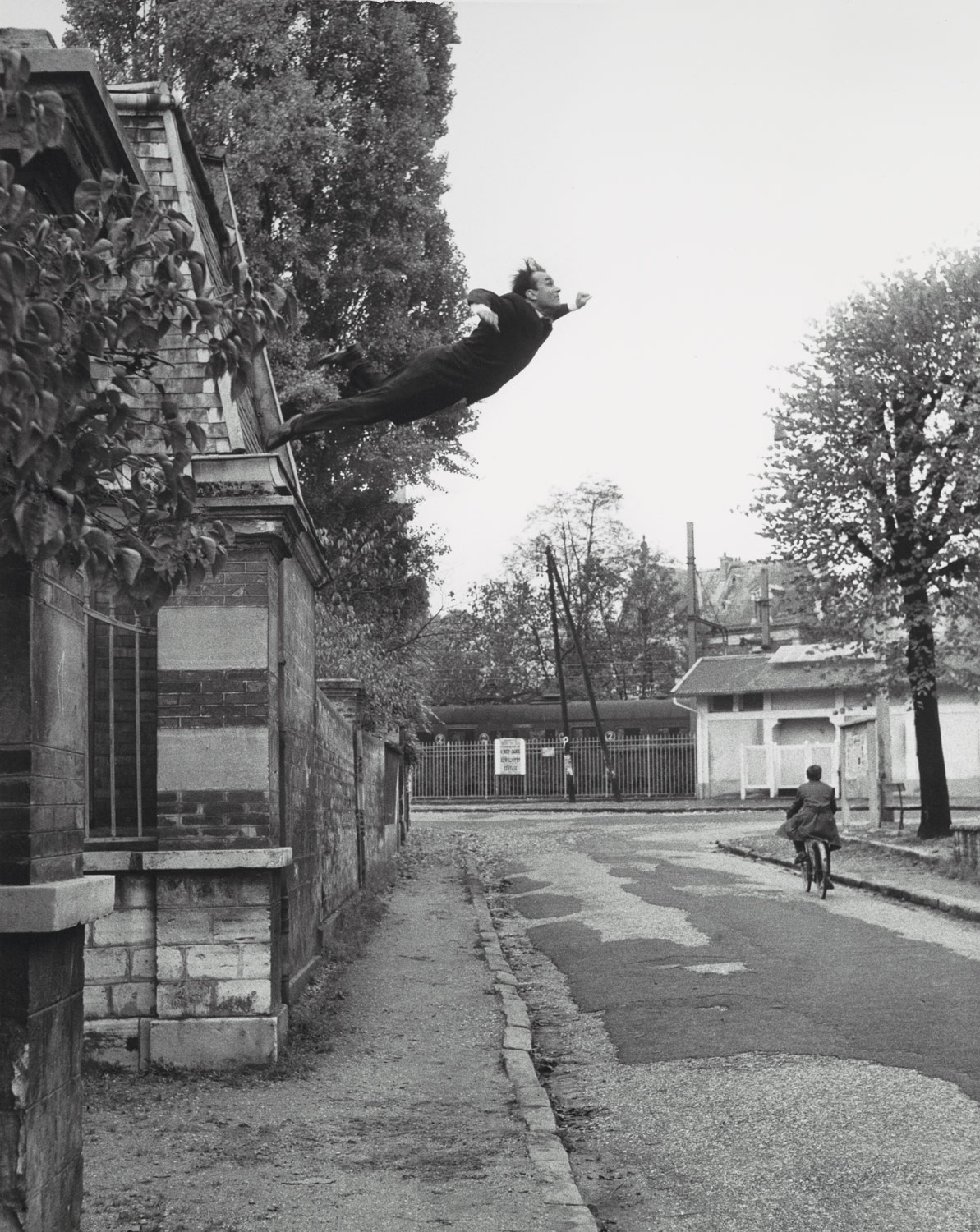
A concept we have to address when looking at images like the above where there is a subject floating in mid-air within the frame of a photograph without nay explanation as to how they got there is how it is manageable and how he actually managed to capture this moment in time which seems very unrealistic because it goes against the knowledge that humans cannot fly – that we belong on the ground on our feet and not floating in the air.
Many conclusions can be drawn from what is shown above and the one that is most common as Pope told me after working with him at an old school during his residency on the island, is that people assumed he had photoshopped himself into the image of the vast fields he had pre-photographed. However, this is not the case and in fact Pope has psychically jumped into the air on the edge of this hill I assume to capture the background and whilst in mid air, the camera he has set up on his tripod is connected to a shutter release remote and Pope would have this in his hand and once in the air, he would press the button to release the shutter. Using a slow shutter release speed, he as manged to capture the blurred movement of himself coming up then down again and it creates a very futuristic yet confusing concept which is actually true and real.
Review and Reflection and Progressing to Personal Investigation
Now I am making the transition from set assessments based around family and environment to my own personal study and investigation where I begin to take control of what I do, I saw it necessary to felt on the work I have produced so far during the second year. I have been very archive when participating in workshops and completing tasks relating to my own personal archive and have shown a keen interest when observing the history of Jersey through it sown public archive at the Societe Jersiaise and following on from these early stages, I have really enjoyed producing my own photoshoots which encapsulates the notion of documentary and tableaux and through these processes I have had the chance to look at several new artists which have heavily influenced my artistic mind to aid my success for the rest of the year.
I have used these last couple months as a process of learning of elimination essentially; I have thrown myself into all activities to allow myself to get a full understanding as well as letting myself experience the full effects of being very much committed to my work in order for myself to understand what I personally enjoy and what I am not too keen on. This has allowed me to reject certain topics/themes that I don’t feel I can strive in as much as others – which has therefore made my decision easier now I am deciding on the outlet I want to pursue for my own personal project which will conclude in a photobook.
Being able to work with professional and world-renowned photographers such as Jonny Briggs and Tanja Deman has really expanded my horizons and matured my artistic mind as well my eye for new perspectives when using a camera because the close relationship and intimate workshops carried out with the two have been a very useful experience. As well as this, out of school, I have been actively involved in what else they had to offer and have taken full advantage of their time on the island because it is not often that you have two willing professional photographers on your doorstep to aid your own passion for photography. Through attending workshops they have held in holidays and at weekends, I have been able to work very closely with both artists and the skills learned from this has essentially been transferred into my work at school where I saw myself experimenting with new techniques and the skills learned on the workshops have benefited my confidence to be different which will play a very huge part in my own personal work in the future. Through the workshops, I had the chance to meet other likeminded people of my age and the close proximity I have had with these people has made me appreciate the creativity on the island much more.
With he two photographers immersing themselves into two very different concepts of genres of photography, it has allowed me to see the direct contrasts of two styles of photography and allowed me to realise, in my work at school as well, the format for my personal study I want to pursue. I have always had an eager interests in photographing people since I started using photography as an outlet for being creative and this has followed me through my whole experience with photography at school, however had not had the confidence to use people as focal subjects of my work until recently. This concept will be the main focus point of my work this year and I look to interlink the ideas of documentary and very “raw life” images of the actuality of our lives themselves and the use of portraiture and people who are very present in my life currently.
One of my aims for the year is to experiment and explore much more than what I have done thus far. I want to be much more contemporary in my work – evident from the work I have recently produced where I made a link between family members and their childhood memories trough objects they treasure. This contemporary approach was influenced by the likes of Alfonso Almendros and Rita Puig-Serra Costa. As opposed to last year and recent times where I have relied heavily on editing to manipulate an image heavily and produce very overpowering photo montages where the meaning and raw visual concept of the images is often ignored, this year I wish to be much more simplistic and delicate with my editing process where in portraits I will only look to enhance certain colours if needed or make a few touch ups etc.


Certain themes I enjoyed were mostly based around family and the idea of photographing the faces of the people around toy to tell a story – another idea I wish to experiment with in my work this year – to tell a visual story and this is vital in a photobook. I hope to use other various concepts such as dairy entries, notes and drawings etc. to insert into series of works to tell a narrative. As well, I hope to be much more elegant and thoughtful in the work I produce and one of my goals is to not rush things and make sure I am taking time with my processes in order to get the best outcome.
Personal Target: to be experimental and concise with my work - make sure I taking my time with my thought processes to benefit the outcome and to tell a narrative with my images - be different to what I done already.
Tracking Sheet


Memories of Childhood / Tableaux Shoot
Childhood Nostalgia
After researching the work of a couple of tableaux photographers, being Alfonso Almendros and Maria Kapajeva, I really wanted to get underway with my own tableaux photoshoot, however, I did not feel like I wanted to produce a series of images in the style of either Kapajeva or Almendros because I wasn’t completely attracted to their work in order to implement their style into my own example.
However, I had a look through a photo book which present in the classroom at school. It was a book entitled ‘Where Mimosa Bloom’ by an artist named Rita Puig-Serra Costa. In her book, she also specialised in aspects of tableaux photography in the form of photographing objects – still life as such and portraits of the family members and then pairing the images together. However, the meaning and concept goes beyond what the simplicity it sounds like. The objects photographed in a studio style as opposed to photographing them in their natural environment or where she found them are then digitally directly placed in this photo book on the opposite page of a portrait also taken by Serra-Costa. It seems as thought the portraits are of family members and the objects paired with each portrait is relevant in some way to the subject of the portrait. Although there is no direct explanation or link between the two, a narrative is drawn by the audience where we provide out own explanation of what could be the intention of this – there is obviously a meaning of the object in relation tot he subject but this is not actually explained. I found this very intriguing and eye-catching in its minimalism and wished to attempt a series of my own in the style I witnessed by Serra-Costa in her book ‘Where Mimosa Bloom’ which is about her family and place they live.
The primary results are below. I first attempted by completing my own memory and I will then go onto do the same process with my other close family members, including my mum, my step-dad, my nan and my girlfriend. This will provide a very compete and cohesive set of image which tell a visual story of not only my childhood memories about the loved ones around me.
Explaining the Series' Process
Here are the images I created in response to Rita Puig-Serra Costa’s images from her series ‘Where Mimosa Bloom’. My aim from this series I have created was to show my own family through a composition and the juxtaposition of old archives in comparison to contemporary, staged portraits of their life now and how they look back on to the memory they have shown. I have presented nt only my own childhood nostalgia but the others around me to create a cohesive narrative accompanied by very thoughtful inserts of written notes by each individual to he;p the audience understand what is going on in the photo. Each individual has explained why they have chosen the object they have and what it means to them as well as the memory it brings back. I attempted to show this connection to a particular object even further in the portraits where I asked my subjects to create a facial expression/show through their presented emotion the feeling the object gives them when looking back on its worth of their childhood.
To create the studio-like images of the objects each subject handed me to accompany their portrait, I set-up a mini studio in my room suing black card. I collected a couple sheets of black card from my school to take home t allow me to produce to the still-life images. In my room I have two very large windows both with very large window sills as the windows are almost like alcoves in that they are very far into the wall. This allowed me to set up the black card on the window sill and this was perfect as I allowed for lots of natural light which resulted in my objects being perfectly lit and the conditions for this were great when I would come back for school each day. I created an infinity curve using one sheet stuck to the wall and then competed the set-up with another sheet on the flat surface and I would place each object on the curve and then adjust my camera settings accordingly to account for the lighting already provided which obviously illuminated the right side of each object and this allowed for an interesting look to each image where the left ide would be in the dark and I would aim to under-expose each very slightly to get the best effect of the black background. For the notes written by each subject, I got each of them to hold their own note with their hand so it adds a personal touch and I would photograph this against the black background also.
I don’t really feel a need to explain the actual chosen object of each person because the explanation in the words of the subject themselves is provided in written form and I feel like my words won’t do the memory justice because a memory is a very personal and it is best told fro the perspective of the person with that memory. I have attempted to get as close in to the note as possible to it is legible at the same time as keeping the hand in frame and I hope that the handwriting is not too difficult to read.
The Images
Jude
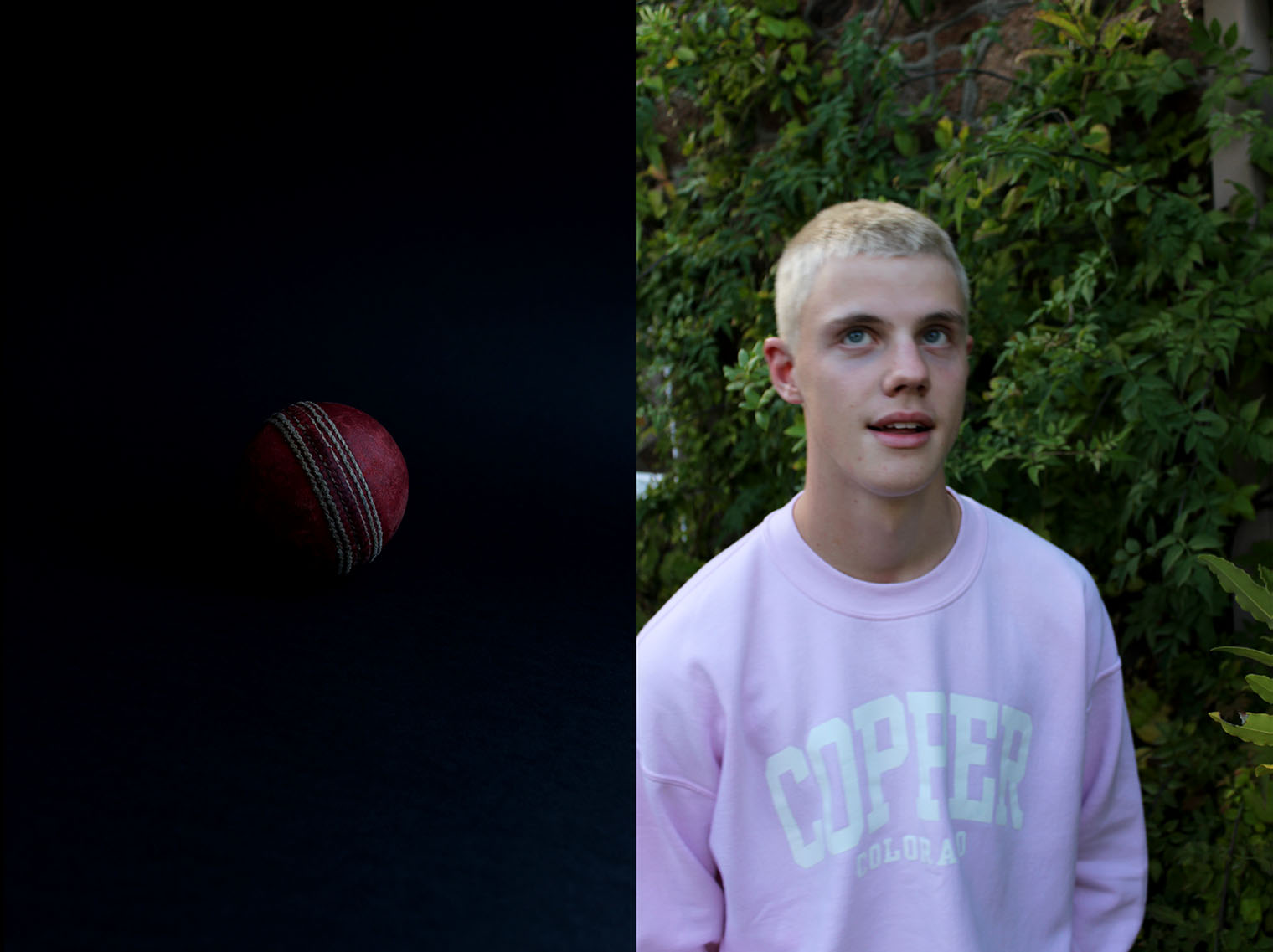
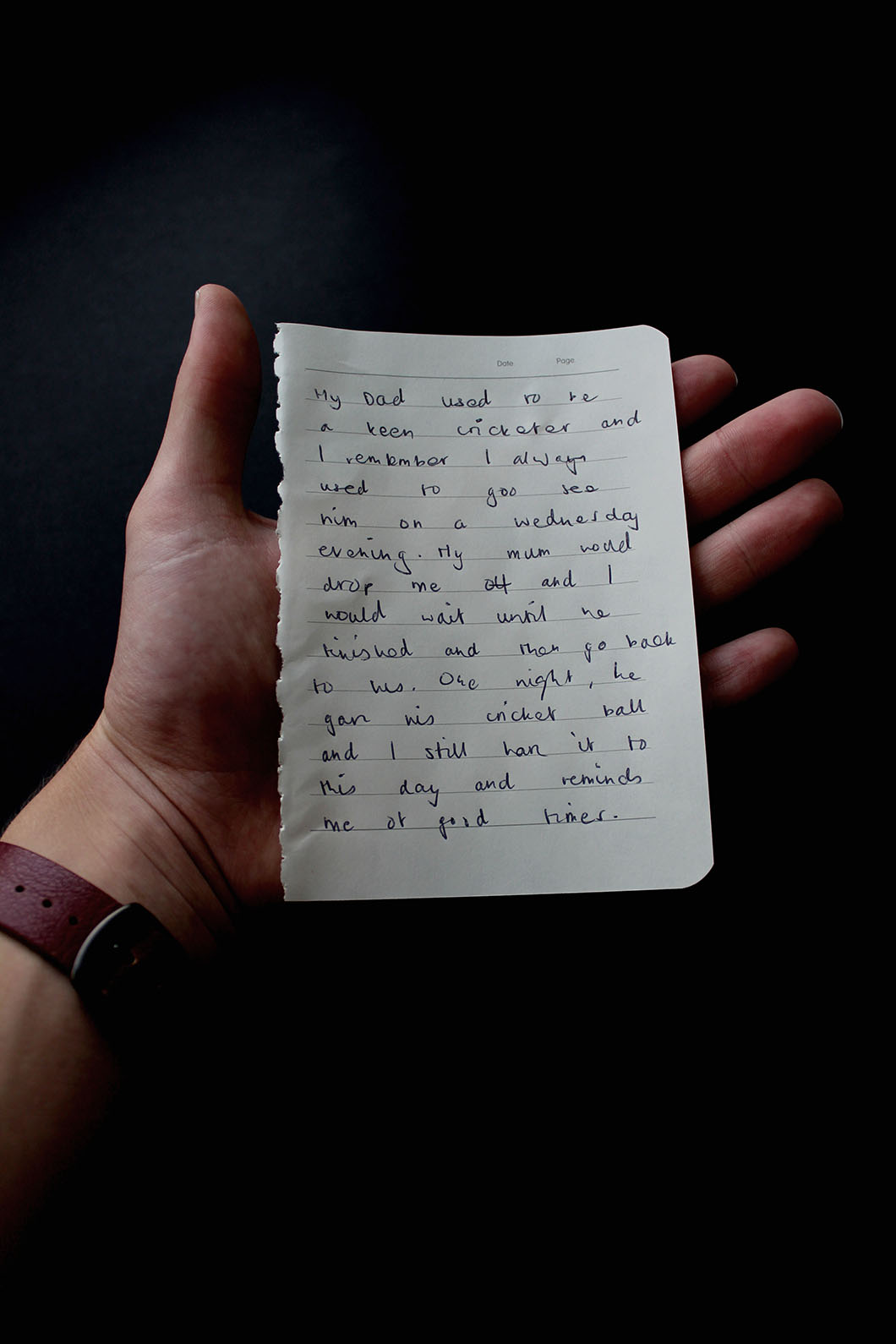
Mum
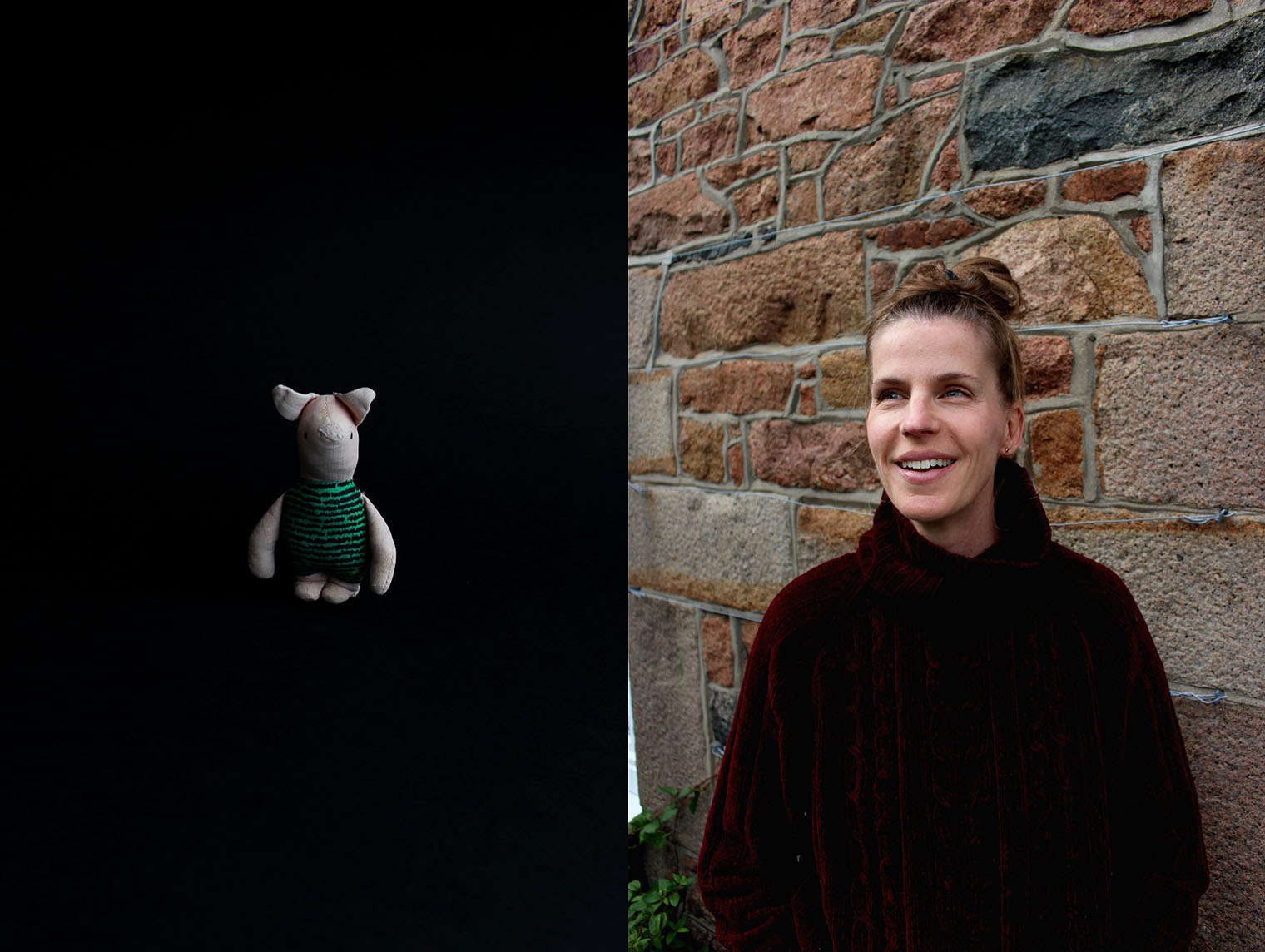
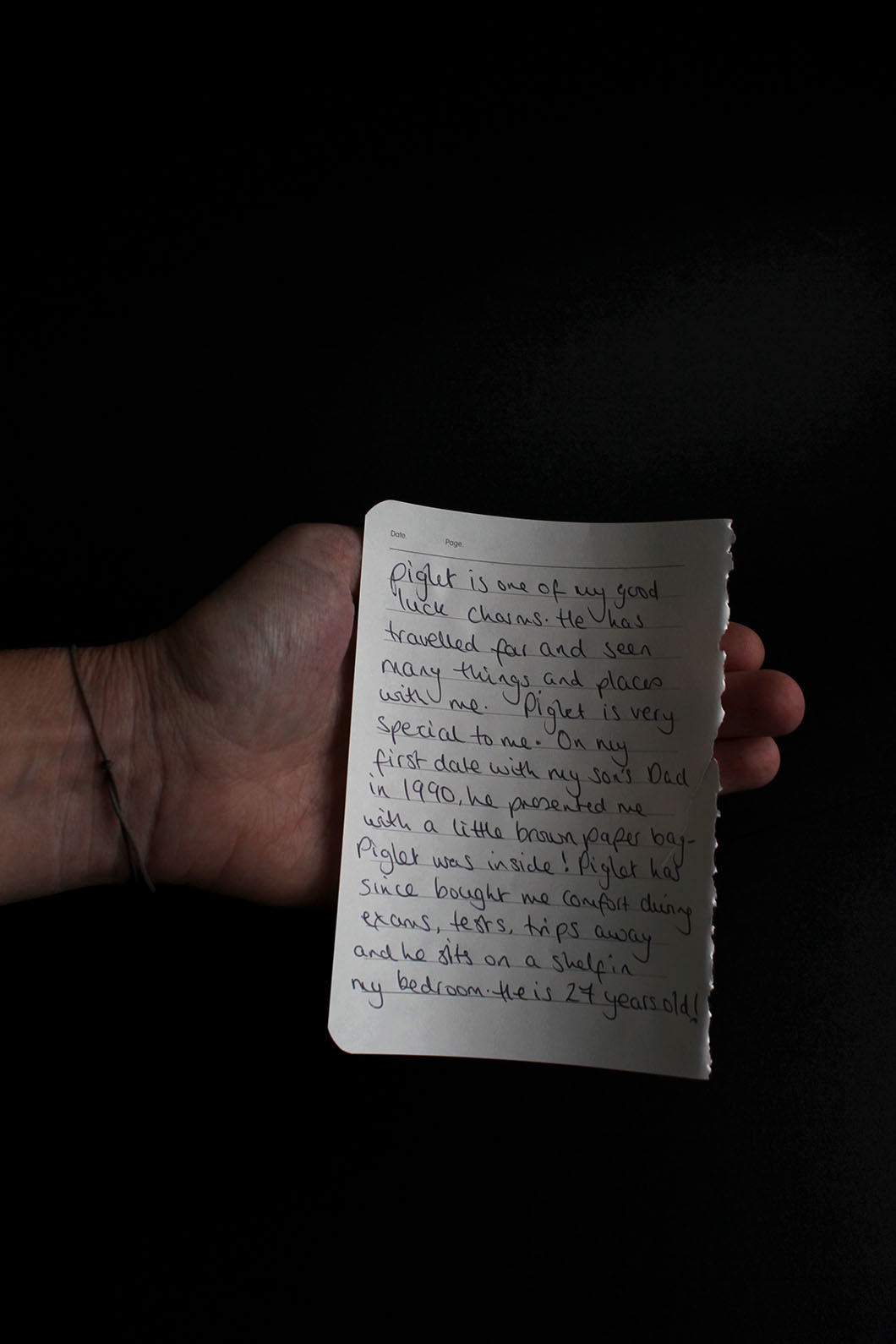
Mark

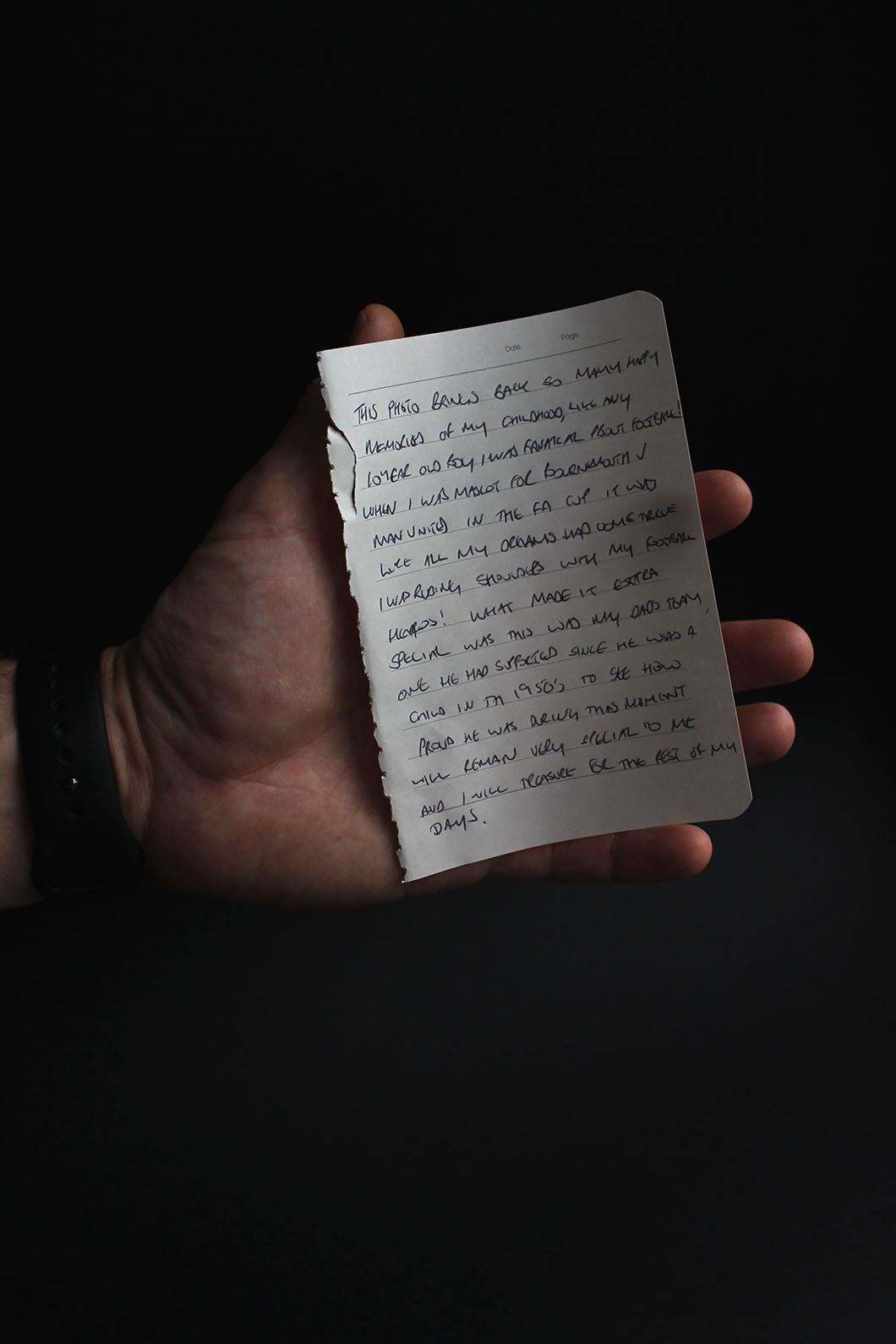
Lucy


Nan

